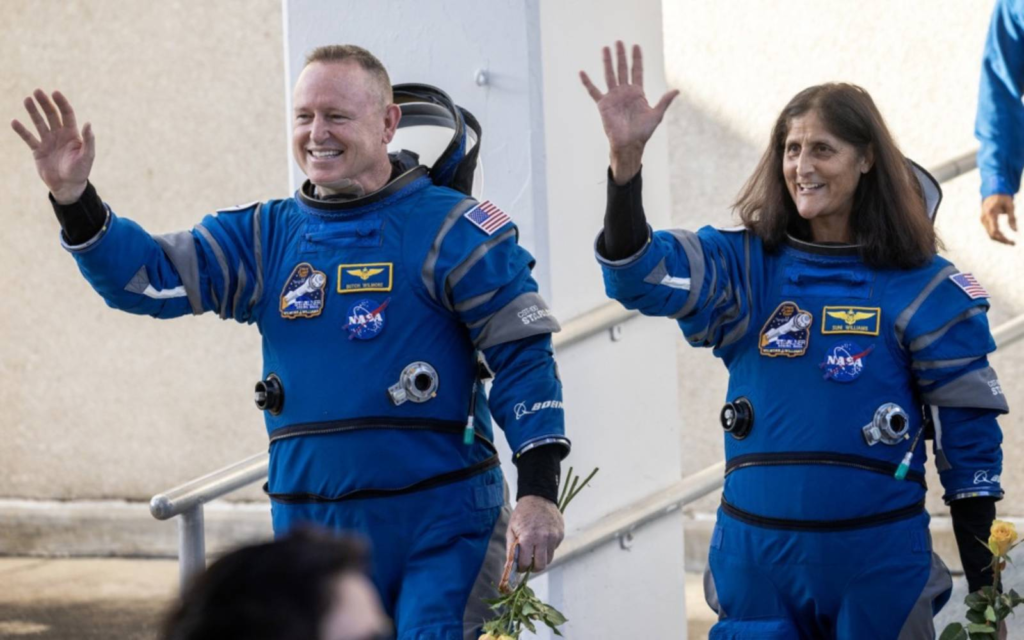Space exploration has always fascinated mankind, but the recent return of NASA astronauts Sunita Williams and Butch Wilmore after an extended 9-month stay in space is nothing short of remarkable. What started as a short mission turned into an intense test of endurance and technology. Let’s dive into the complete details of this historic mission, including the spacecraft used, the reasons for the delay, and the challenges faced during their return.

Mission Overview
- Astronauts: Sunita Williams and Butch Wilmore
- Mission Type: Test Flight
- Original Duration: 8 Days
- Actual Duration: 286 Days (9+ Months)
- Launch Date: May 6, 2024
- Return Date: March 18, 2025
- Spacecraft: Boeing Starliner (CST-100)
- Destination: International Space Station (ISS)
Where Did They Go?
Sunita Williams and Butch Wilmore were part of a test flight to the International Space Station (ISS), which orbits Earth at an altitude of approximately 420 kilometers (about 260 miles). The ISS travels at a speed of 28,000 km/h (17,500 mph), completing an orbit around Earth every 90 minutes.
- Orbit Altitude: 420 km (260 miles)
- Orbit Speed: 28,000 km/h (17,500 mph)
- Orbit Duration: 90 minutes
Why Did the Mission Last So Long?
The mission was initially planned as an 8-day trip, but the astronauts ended up staying for 286 days due to multiple technical issues with the Boeing Starliner spacecraft:



Despite these challenges, the mission provided valuable insights into spacecraft performance and astronaut health during prolonged space travel.
About the Boeing Starliner (CST-100)
The Boeing Starliner is a reusable spacecraft developed by Boeing under NASA’s Commercial Crew Program. It was designed to transport astronauts to and from the ISS.
- Launch Vehicle: Atlas V rocket (by United Launch Alliance)
- Crew Capacity: Up to 7 astronauts
- Unique Feature: Fully autonomous flight with manual backup options
This was the first operational crewed mission for the Boeing Starliner, marking a significant milestone for NASA and Boeing.

 Health Impact on Astronauts
Health Impact on Astronauts
Spending almost 9 months in microgravity takes a toll on the human body. Upon returning to Earth, both Sunita Williams and Butch Wilmore are undergoing a 45-day rehabilitation process to recover from the physical effects of long-term space travel:



 Key Takeaways from the Mission
Key Takeaways from the Mission



 Why This Mission Matters
Why This Mission Matters
This mission is a stepping stone toward future deep space exploration, including planned missions to the Moon and Mars under NASA’s Artemis program. The insights gained from this mission will help in improving spacecraft design, astronaut health management, and mission planning for longer-duration space travel.
 Conclusion
Conclusion
The successful return of Sunita Williams and Butch Wilmore after 9 months in space is a testament to human resilience and technological advancement. While the mission faced unexpected challenges, it ultimately paved the way for more secure and reliable human space travel.
Stay tuned for more updates on future NASA missions and breakthroughs in space exploration!


 Did you enjoy this article? Share your thoughts in the comments below!
Did you enjoy this article? Share your thoughts in the comments below!
2 Comments
Yeah nice details but why its take so much time for rescue of that both astronauts.
[…] has been a topic of fascination for centuries. Some believe it is a legitimate science, while others dismiss it as mere superstition. But the real question is—Is astrology backed by […]